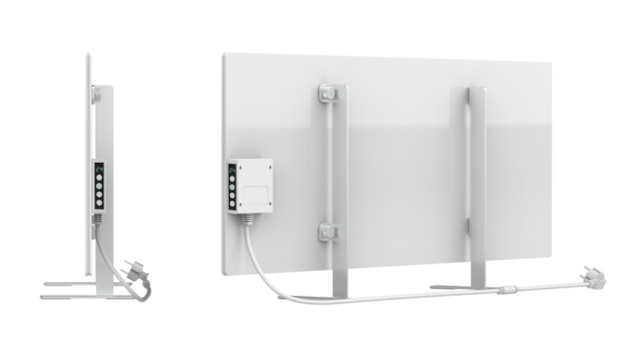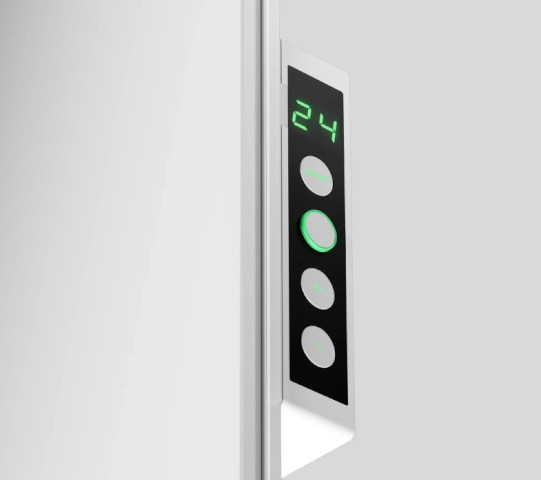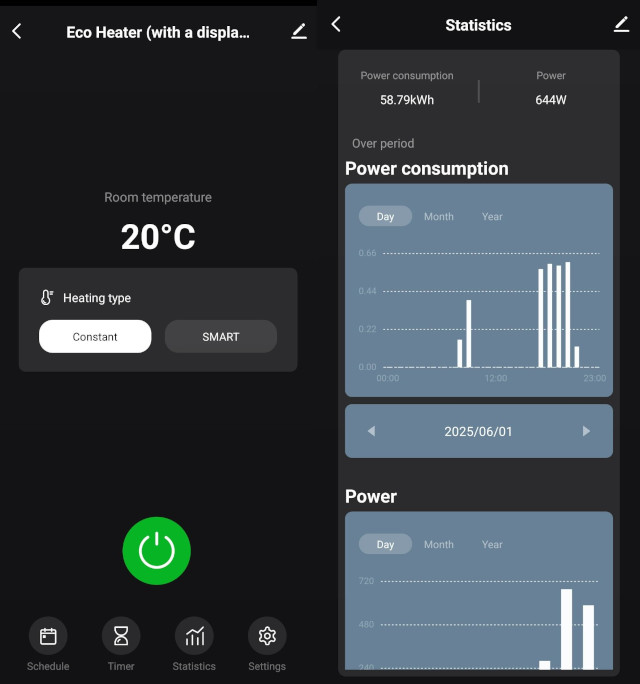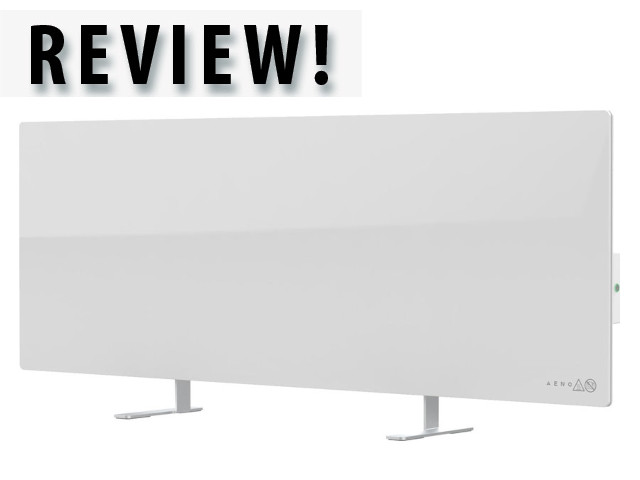With winter firmly making its presence known across Mzanzi, it’s time to bring out the heater(s) again, hoping that it will not hurt the pocket too much when it comes to electricity consumption. The Aeno Premium Eco Smart Heater is coming all the way from Poland to help heat up local homes, hopefully efficiently so.
There are a few tick marks in all the right boxes. Firstly, the Aeno's premium glass design fits delightfully well into modern spaces where sleek good looks do not go unappreciated. Made from glass, it’s mounted on two anodized aluminium feet, with assembly taking less than five minutes with no tools required. It can be wall mounted, although that would mean getting the drill out.
Secondly, the Aeno is smart, meaning like many other home appliances these days, it can be managed off your smartphone via app. At the most basic, it allows you to turn the device on or off, but there are far more features available, discussed a bit later in this article.
Thirdly, Aeno notes the panel makes use of energy-saving infrared technology, explaining further that it heats up objects and air without drying the air or blowing it about. “This method of heating is more efficient as it quickly reaches all surfaces of furniture and walls, making them radiate heat (including people) within its radius of action without loss.” And yes, during testing it did not dry out the air, a big plus if you are suffering from season allergies or the regular winter sniffles. There was a “new heater” smell present when it was first switched on, but it soon enough dissipated, with no odour noticed during further usage.

Energy usage
As far as the energy-saving claim, Aeno states consumption of between 160 Watt per hour of operation, to 700+ Watt per hour. We measured this using a socket power meter and found that typically measurements were between 710 W and 790 W, with the panel on full power. Far smaller and far less powerful square wall-mounted square panel heaters consume in the region of 420 W, while more powerful nine fin oil heaters 2000 W per hour. If calculations are correct, this would mean the Aeno costs roughly in the region of R1.70 per hour to run, at least on our Joburg rate of R2.27 per kWh.
Aeno notes the heater is best suited for a 30 m² room, typically the size of a smaller bedroom or home office. Indeed, this heater did break that typical cold feel, especially during early mornings or at night. However, the Takealot listing for the Aeno notes that South African homes are not insulated, which means that even smaller rooms might not receive the same heating benefits as European rooms might. Because of this, personal heating brings the best benefit – meaning placing the heater close by (between 1-2 m) for more focussed heat.
If you are looking for a heater to heat up a room to the point of being able to strip off layers of clothes, it’s best to look elsewhere. Indeed, the closer to the Aeno the better, raising the temperature by about 8°C when close by. However, while the room felt hotter, it did not do much to raise the overall temperature, maybe by a degree or two when checking it on a thermometer further away.

Is Smart necessary?
Some might question the benefits of smart devices, but in this case, the Aeno provides at least two solid reasons to use the app – a timer and a scheduling option. Once on you can set the amount of time you want the heater to run and also create a schedule for when you want it to turn on every day (but unfortunately not when it turns off). This is great for preheating a room when needed.
On the main screen the app shows the current room temperature (it’s measured with a thermometer in the power cable), which heating type is selected (Constant or Smart) and a big power button to turn the unit on or off. Delve a bit deeper and you can find stats regarding the Aeno’s daily, monthly and yearly power consumption, while you can also select the notifications you want to receive on your phone (connection lost, device fall, overheating, etc.), if at all.

Users can also choose between Constant and Smart heating. Constant sets the panel to its highest power - 120°C, while Smart allows you to choose the average temperature the room should be, with the Aeno then regulating itself to achieve this. While Smart might work in rooms below 20°C, from our experience the panel never quite managed to heat up a room past 20°C, so it was always used as Constant.
Using the app necessitates a wi-fi connection, and setting up the Aeno on the network was painless and quick. If no connection is available, you do have a small display at the back of the heater for the most basic functionality (current temperature, on/off, Constant or Smart, the temperature required for Smart).
One big benefit for those of us who are sensitive to any type of light while sleeping, is that the LED backlight of the display can be adjusted using the app, making sure no lights are present during the darkness of night.
The clean, sleek look of the Aeno necessitates that it remains as clutter-free as possible. However, a handle to carry this around would not have gone amiss. Sure, the nature of European homes perhaps allows for different heaters in each room, but I’m sure local households will want to carry this from room to room.
While one should expect panel heaters to, well, heat up, the Aeno panel gets really hot – 120°C at its maximum. That means it’s pretty much a heater to keep away from little toddlers toddling about. The heater does contain a rollover sensor which immediately switches the panel off when dropped.
Get it or not?
It’s clear that a lot of thought went into the design and functionality of the Aeno heater. Sleek, thin,relatively small, it's a good fit in our days of iPhone aesthetics. It’s also not just smart for smart sake, rather incorporating decent functionality, such as scheduling, into the app. Finally, at below 800 Watt per hour, it should keep your energy bills in check.
However, it’s this low power output combined with SA’s badly insulated houses that makes the Aeno, as stated on its Takealot page, best for “personal warmth, not full-room heat.” Indeed, best results are achieved when you are close to the heater, so if you are looking to heat up a full room, the Aeno will struggle to make you happy.
At a recommended R5 499, the Aeno Premium Eco Smart Heater is certainly also in a higher price bracket.
FULL DISCLOSURE: This heater has been receive from Aeno as a review device and has not been returned. No input was received from Aeno to write this review.
Aeno Premium Eco Smart Heater - Quick Review
- What is it? A fancy glass smart heater from Poland.
- Looks: Super sleek and modern, glass with aluminium feet. You can mount it on the wall if you're up for drilling.
- Smart Stuff: App controlled. Turn it on/off, set timers, schedule when it comes on, see power usage and get alerts. Pretty neat.
- Heating Tech: Uses infrared, heats objects and air without drying things out. Nice if you hate dry air in winter.
- Power Usage: Said to use 160-700+ Watts, but tests showed more like 710-790 Watts on full power. Costs about R1.70 an hour to run in Joburg, if calculations are correct.
- Room Size: Best for a small room (like a bedroom or office) around 30 mm². But SA homes aren't insulated like European ones, so keep that in mind.
- "Personal Heating": Basically, it works best if you're close to it (1-2 meters). It'll warm you up but might not heat the whole room.
- Smart App Features: Timer, scheduling (on, but not off), shows room temp, power stats and notifications. Can choose between Constant (full power) and Smart (sets to a target temp).
- App Needs Wi-Fi: But there's a basic display on the back if you don't have a connection.
- Sleep Friendly: The LED light on the display can be dimmed or turned off in the app - awesome for light sleepers.
- Carry It Around?: No handle - you'll have to lug it carefully once cooled down.
- Hot Hot Hot: The panel gets super hot (120°C), so keep it away from kids! It does have a rollover sensor to turn off if it falls over.
- Overall: Looks great, has cool smart features and saves on power. But it's mainly for heating yourself, not a whole room, and it's a bit pricey.





